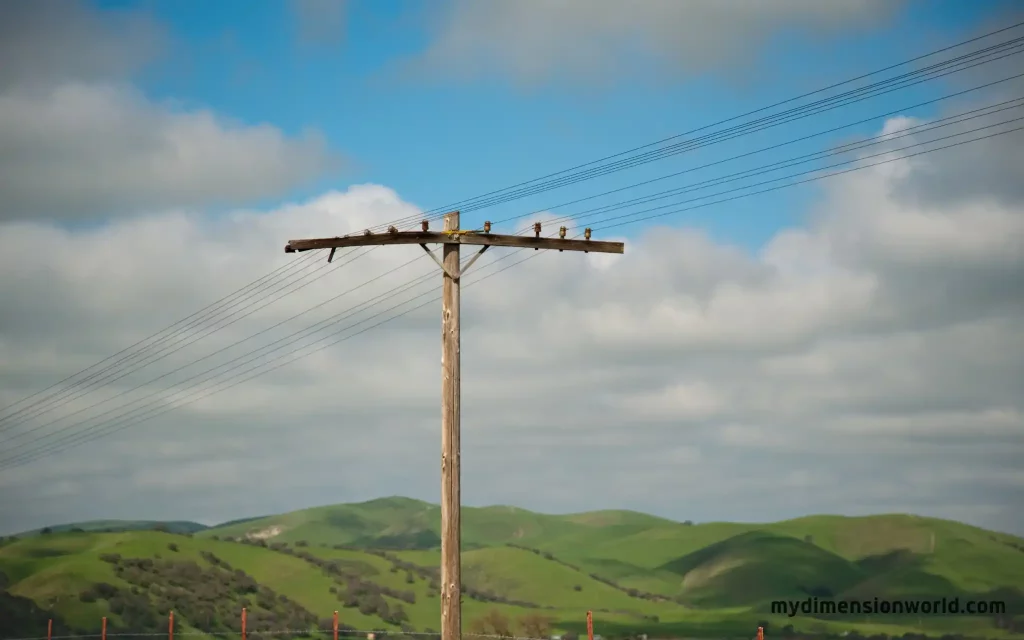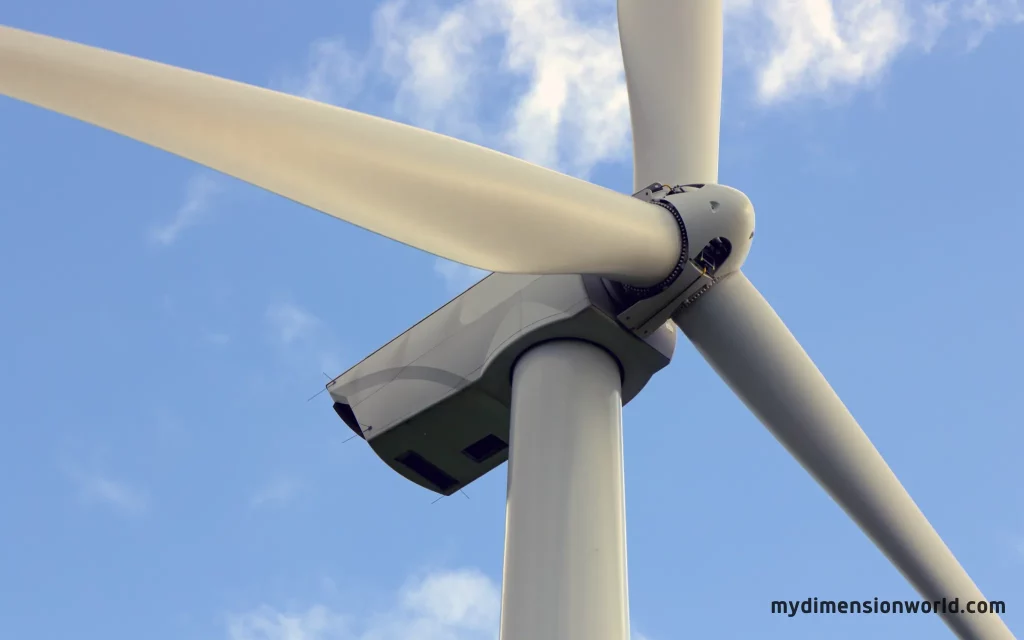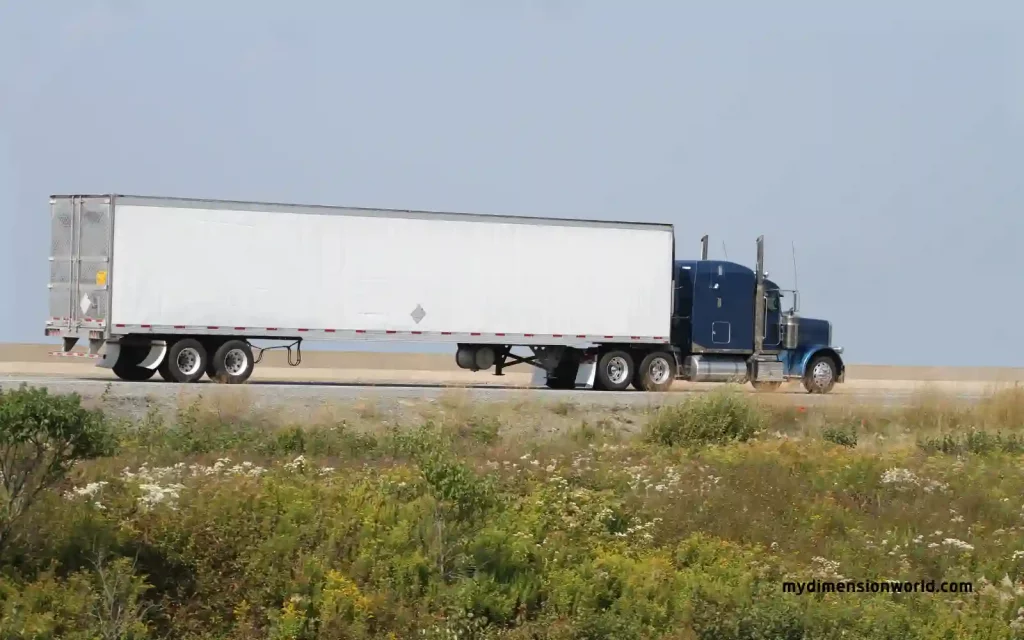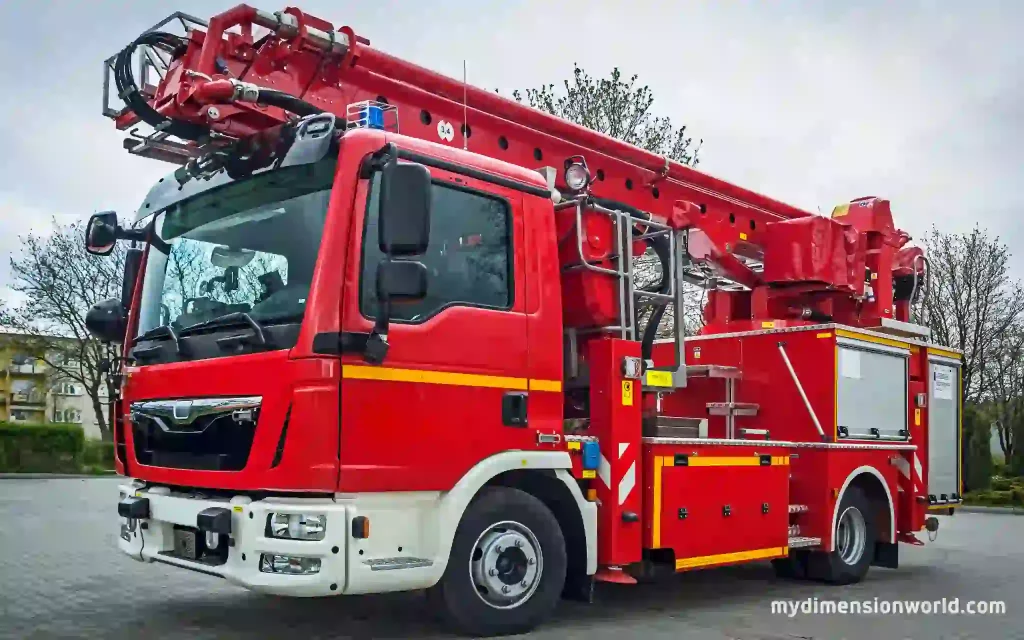When we talk about something being roughly 44 feet long or high, we’re referring to an object that’s just slightly longer than the width of 3 standard parking spaces lined up end-to-end.
This concept may seem abstract at first, but it’s actually quite useful when it comes to visualizing different objects and structures.
As mentioned earlier, one object that helps illustrate this concept is the school bus – which measures roughly one foot shorter than our benchmark of about 44 feet long.
Other common objects that fit within this range include semi-trucks with trailers attached (which typically measure between 40-53 feet), fire trucks (which can measure up to about 50-60 feet), and many types of heavy construction equipment.
Contents
- 1 1. Movie Theater Screen: Where The Magic Happens
- 2 2. Concert Stage: Creating An Unforgettable Experience
- 3 3. Ferris Wheel: Enjoying Panoramic Views from Above
- 4 4. Standard Two-Story Building
- 5 5. Telephone Pole
- 6 6. Wind Turbine
- 7 7. The Blue Whale: The Largest Animal on Earth
- 8 8. Giant Sequoia Tree: A Towering Wonder of Nature
- 9 9. African Elephant: Mighty Giants on Land
- 10 10. School Buses
- 11 11. Semi-trucks and Trailers
- 12 12. Fire Trucks
1. Movie Theater Screen: Where The Magic Happens

Watching movies on the big screen is one of the most enjoyable entertainment experiences. A typical movie theater screen is about 44 feet wide and 24 feet tall. With a diagonal measurement of around 51 feet. The size of a movie theater screen may vary depending on the number of seats available in the theater.
The larger screens in modern movie theaters provide an immersive experience for viewers, allowing them to be fully immersed in the film and feel like they are part of it.
The screens are made up of materials that reflect light onto them uniformly without any distortions, allowing viewers to enjoy clear and crisp images.
2. Concert Stage: Creating An Unforgettable Experience

A concert stage is where musicians showcase their talents and entertain their audiences.
A typical concert stage is about 44 feet wide and 32 feet deep, providing enough space for musicians to move around freely while performing.
In addition to providing enough space for performers, stages also have lighting effects that add more excitement to the performance.
Modern stages have lighting systems that can generate millions of colors for added drama and entertainment value.
3. Ferris Wheel: Enjoying Panoramic Views from Above

Ferris wheels are a classic amusement park ride that provides riders with panoramic views from above. A typical Ferris wheel has a diameter of approximately 44 feet, which makes it possible for riders to enjoy amazing views from a safe height.
The carts or pods attached to the Ferris wheel are designed in such a way as to provide maximum comfort to riders while ensuring their safety at all times.
Riders can see far into the distance from atop these wheels, making them an ideal ride for people who love heights or those who like admiring views from above.
Overall, entertainment is an essential aspect of our lives, and enjoying these entertainment activities is made possible by the existence of objects such as movie theater screens, concert stages, and Ferris wheels that are about 44 feet long or high.
4. Standard Two-Story Building

A standard two-story building is roughly 44 feet tall. These types of buildings are commonly seen in residential areas, where they serve as homes for families.
The height of a two-story building varies widely based on the design and purpose of the structure, but most range from 20 to 30 feet on each floor. The foundation of a typical two-story building must be sturdy enough to support the weight of the structure above it.
This requires careful planning by architects and engineers to ensure that the foundation can handle both vertical and lateral loads.
The walls and floors must also be constructed with care to ensure that. They can withstand pressure from wind, rain, snow, and other forces.
Two-story buildings may include basements or additional levels beyond the second floor. Which can add even more height to their overall size. Because these buildings are so common in residential areas. Understanding their dimensions is important for anyone interested in architecture or real estate.
5. Telephone Pole

Telephone poles are typically around 44 feet tall and play an important role in telecommunications infrastructure around the world.
These poles support telephone lines that carry voice and data traffic between people’s homes and businesses. Poles come in a variety of shapes and sizes depending on their location and function.
A typical pole consists of three parts. A vertical pole made from wood or metal. Electrical wiring extending up from the ground into a cross-arm attached midway up the pole.
6. Wind Turbine

A wind turbine is usually about 44 feet high at its base so. Its blades can reach high into the air where stronger winds blow.
These turbines generate electricity from the movement of wind across their blades and are a key component of renewable energy generation.
The main components of a wind turbine include the tower, which provides a stable platform for the rest of the structure. The rotor blades, which capture kinetic energy from wind. And the nacelle, which houses all of the equipment necessary to generate electricity.
Wind turbines must be designed and constructed with great care to ensure they can withstand high winds and other environmental conditions. Because they are so tall, their structural integrity is critical to preventing catastrophic failure.
Building and maintaining a large-scale wind turbine requires specialized knowledge and skills in engineering, physics, and renewable energy technology. As demand grows for renewable energy sources, understanding how these turbines work will become increasingly important for people in many fields.
7. The Blue Whale: The Largest Animal on Earth

The blue whale is the largest animal on earth, with an average length of about 100 feet. However, it’s interesting to note that a common measurement for this massive mammal is about 44 feet.
This refers to the height of its heart, which is roughly equivalent to the length of two school buses. Blue whales are found in all oceans around the world and can weigh up to 200 tons.
Despite their immense size, they feed primarily on krill, tiny shrimp-like creatures that they filter through their baleen plates.
Blue whales were once hunted nearly to extinction for their valuable oil and meat, but today they are a protected species.
8. Giant Sequoia Tree: A Towering Wonder of Nature

The giant sequoia tree is one of the most impressive sights in nature. It’s not uncommon for these trees to reach heights of over 300 feet and have diameters exceeding 30 feet at their base.
While not quite as tall as some other trees like redwoods or Douglas firs, giant sequoias are some of the largest by volume. Interestingly enough, a typical giant sequoia can be measured at around 44 feet high.
9. African Elephant: Mighty Giants on Land

African elephants have always been a symbol of power and grace in African cultures. These majestic creatures can grow up to 13 feet tall at their shoulders and weigh over 6 tons.
One common feature you might find in an African elephant is its long trunk – measuring around seven feet long – which helps them breathe, communicate, and grab food.
While African elephants haven’t been measured to be exactly 44 feet. It’s worth noting that their impressive size and strength make them a perfect addition to the list of things about that height. They are truly one of nature’s wonders and a testament to the infinite variety of life on Earth.
10. School Buses

School buses are a familiar sight for anyone who has attended school or had children who do so. These iconic yellow vehicles are designed to transport students safely to and from school.
A typical school bus is about 44 feet in length and can accommodate up to 72 passengers (depending on the model).
School buses have numerous safety features, such as flashing lights, stop signs, and safety belts (in some models), making them one of the safest modes of transportation for children. The design of school buses has evolved over time to improve safety standards.
For instance, they come with extra padding on seats and metal frames that absorb impact in case of an accident.
The windows on most modern school buses are also designed with shatter-resistant glass that can withstand severe impacts without breaking and injuring passengers.
11. Semi-trucks and Trailers

Semi-trucks and trailers are among the most critical means for transporting goods across large distances. These massive vehicles can carry large amounts of cargo, making them ideal for long hauls across states or countries.
A standard semi-truck is about 70 feet long (including its trailer), with the trailer alone measuring around 53 feet in length.
They often have multiple axles (up to six) to distribute their weight better while on the road. Semi-trucks also come equipped with advanced technology such as GPS tracking systems. Electronic logging devices (ELD), cameras, and sensors that help drivers maintain control over their vehicles and ensure the safe delivery of goods.
12. Fire Trucks

When it comes to emergency response, fire trucks are among the most critical vehicles. These specialized trucks are designed to transport firefighters, rescue equipment, and water to the scene of a fire or other emergency.
A standard fire truck is about 44 feet long or more (depending on the model), with an extendable ladder that can reach up to 100 feet high.
The design of modern fire trucks has also evolved over time, incorporating advanced safety features such as airbags, electronic stability control (ESC), and collision avoidance systems. Some models even come equipped with infrared cameras that help identify hot spots during firefighting operations.
Conclusion
As demonstrated in this article, there are numerous common objects around us that are roughly 44 feet long or high. While this may seem like a trivial detail, understanding the size of these objects can provide valuable context and insight into our environment.
For example, knowing that a standard two-story building is approximately 44 feet tall can help us appreciate the scale of our towns and cities.
Similarly, realizing that a blue whale is about this length can help us comprehend just how massive these creatures truly are. Additionally, understanding the length and height of common objects can have practical applications.
For instance, knowing the dimensions of a shipping container may be useful when planning a move or figuring out how much storage space is needed. Similarly, recognizing the size of various sporting courts can inform game strategy and improve overall performance.
